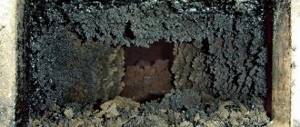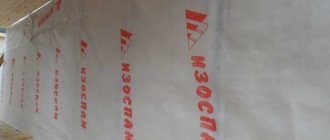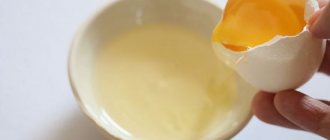High air humidity and condensation settling on surfaces are serious enemies of building structures. Gradually, they begin to negatively affect the materials of walls, floors and roofs, reducing their strength and thermal insulation characteristics. To avoid this, a membrane or vapor barrier film is used.
How steam is formed
The peculiarities of the climate of our latitudes force people to maintain a temperature in their living quarters higher than outside for a significant part of the year. The density of cold air is greater than that of warm air, so with such a difference, excess moisture settles in the form of condensation on the elements of the house.
Even more ideas for building private houses can be found on the website: https://masterinterera.ru/doma/
Vapor permeability of vapor barrier film
Vapor barrier is one of the most important materials used in the installation of roofing structures, which protects wooden roof elements from moisture. When purchasing a vapor barrier material, you should never save money, since the insulation can lose its thermal insulation properties when wet. If moisture gets on wood or metal, fungus or rust may soon appear.
Nowadays, a good and high-quality roof is very important, which serves as sound, heat and waterproofing of the building.
The vapor permeability of a layer of any material contributes to the transmission or retention of water vapor. As a result, the special pressure of water vapor with uniform atmospheric pressure on one side and the other is characterized by the value of the coefficient of this vapor permeability. A vapor-permeable film protects the insulation from wind, precipitation, dust and cold air, and at the same time it also removes steam and moisture that has penetrated into the insulation.
The vapor barrier film acts as a vapor barrier. This function protects the insulation from water vapor entering it, which comes from inside the room and also reduces the risk of condensation forming in the insulated structure. Vapor-permeable and vapor barrier films have different coefficients of vapor permeability; this depends only on the productive grade of the material.
What varieties are there?
More recently, this building material was produced in only one variety - glassine. However, technology does not stand still, and today the market offers many better and more durable products. So, there are the following types of vapor barrier:
Polyethylene film. Best suited for protecting ceilings in living rooms. Relatively inexpensive and effective. Available in standard versions, reinforced and with a layer of foil.
Polypropylene film. It differs from the previous one in its increased resistance to ultraviolet radiation and mechanical stress.
Liquid rubber. Used as a vapor barrier for floors. Sold in liquid form, applied with a roller or brush. After drying, it reliably adheres to the surface, forming a seamless, highly elastic coating. Also used as waterproofing.
Breathable membrane. It can be single-layer or multi-layer, single-sided or double-sided. Does not require a ventilation gap. Prevents the penetration of moisture inside, while freely releasing it outside.
Membrane with reflex coating. Helps increase the thermal protection of the room due to the ability to reflect part of the heat. It has improved vapor barrier characteristics, making it well suited for rooms with high humidity.
Polypropylene films
This type of vapor barrier materials has a higher degree of strength compared to polyethylene films, which is an undoubted advantage when used, but their cost is slightly higher.
The technology for producing polypropylene materials involves rolling a layer of viscose with cellulose onto the film, which absorbs and retains significant amounts of moisture, providing excellent protection against condensation accumulation in the insulation layer. Due to the additional layer, polypropylene films have Sd = 50...100 m. Installation of such vapor barrier structures must be carried out with a glossy layer to the insulation, and with a rough surface inside the room. It is necessary to leave a ventilation gap between the insulation layer and the film.
The best manufacturers
To purchase high-quality building materials, you need to focus, among other things, on the manufacturer. Choosing a reliable and trusted supplier will help you avoid possible problems. Let's look at the two most famous ones.
Izospan
A domestic manufacturer whose products meet all international standards. Produces 3 types of products:
Izospan C. Two-layer film, one side of which is slightly rough. It retains excess moisture, facilitating its effective evaporation. It is laid on the other side, which is smoother. Well suited as a vapor barrier for roofing.
Izospan B. Differs from the previous one in that it is more suitable for protecting walls.
Izospan D. Universal film equipped with an anti-condensation coating. It has increased strength, thanks to which it can be used as a temporary roof and cladding of external walls.
Vapor barrier and insulation: what is the ratio
Waterproofing is necessary to protect the insulation. In order not to spend money on the purchase and installation of insulating materials on the frame. Sometimes it is enough to use a cheap film, and in some cases it is desirable to provide a sufficient level of vapor barrier. Since it is mounted under external coverings, sidings or linings, two options must be provided:
- If foam materials are used: polystyrene foam, polyurethane, installation of waterproofing is optional. They do not absorb moisture.
- If any type of wool is used, a waterproofing coating is required.
Waterproofing a house is a way to extend the life of walls. It is important to choose the right material and install it in the right direction. Otherwise, the reliability of the protection is not guaranteed.











